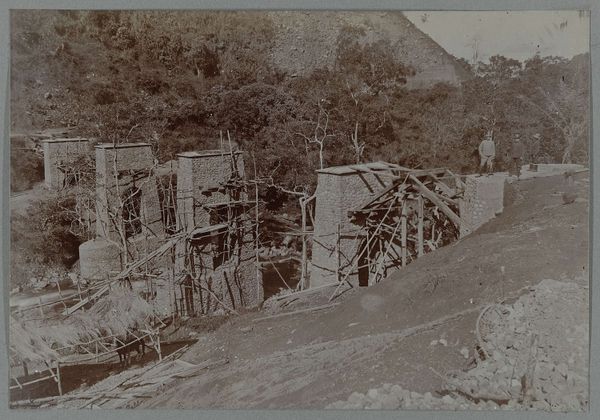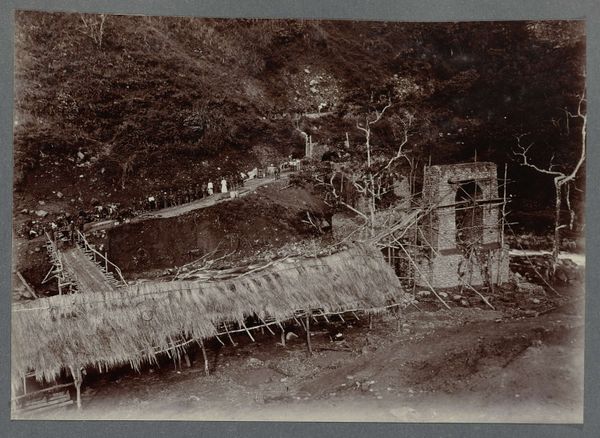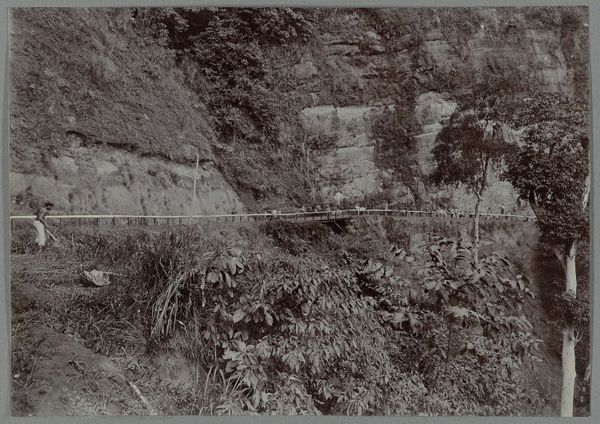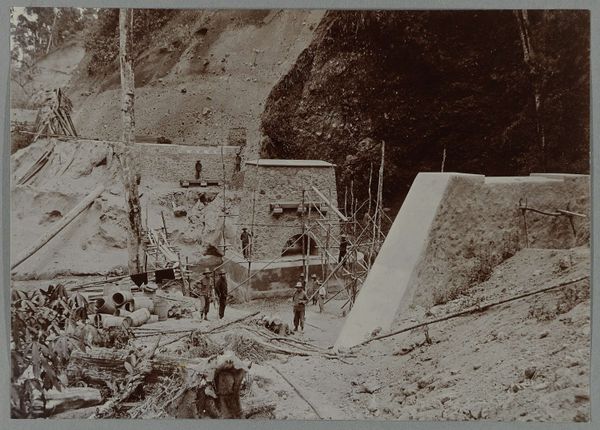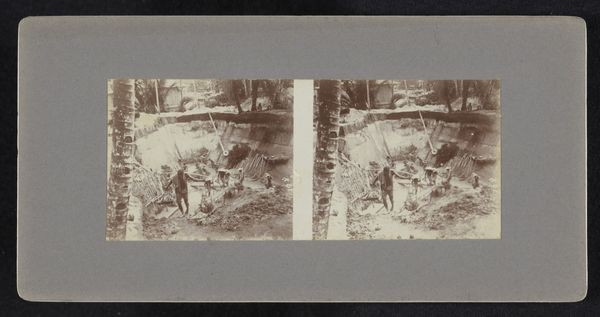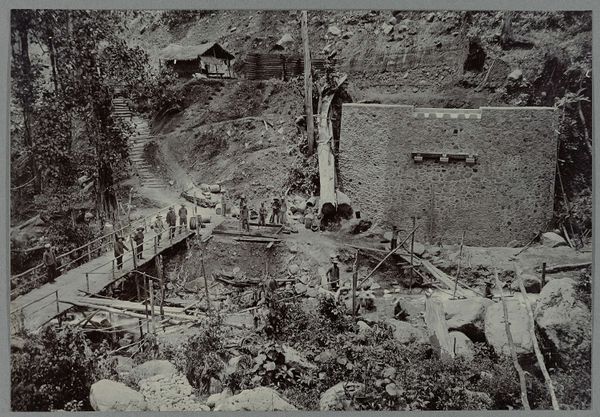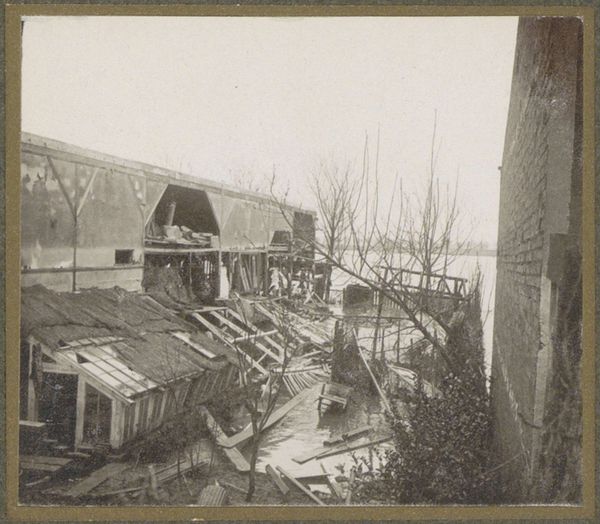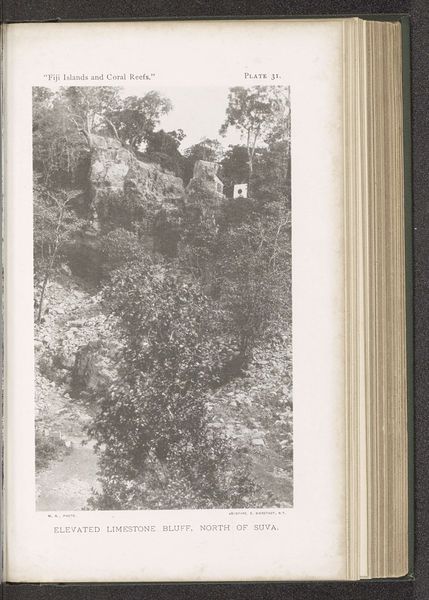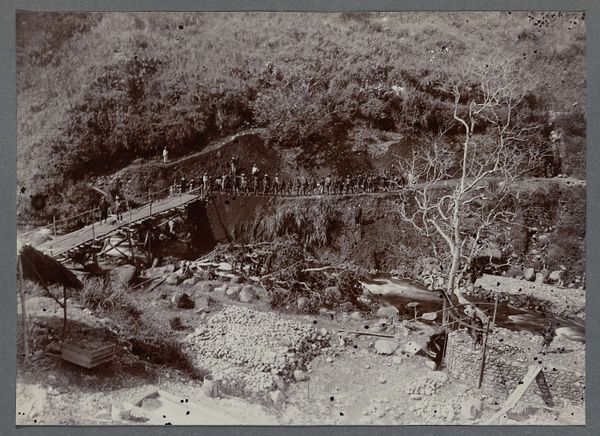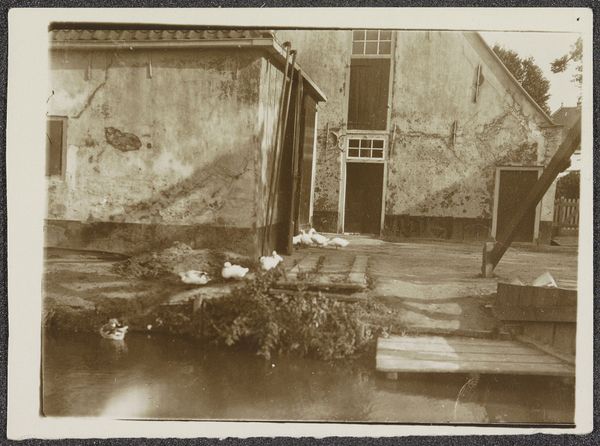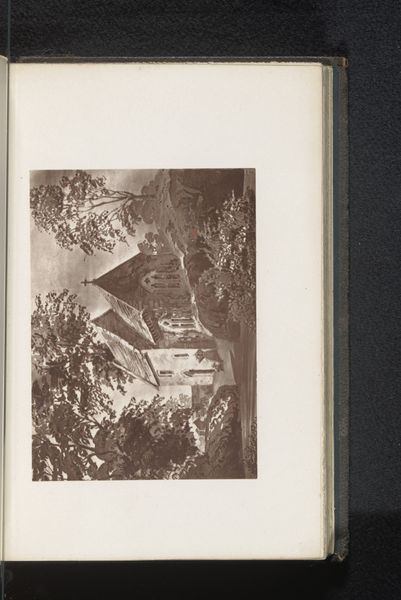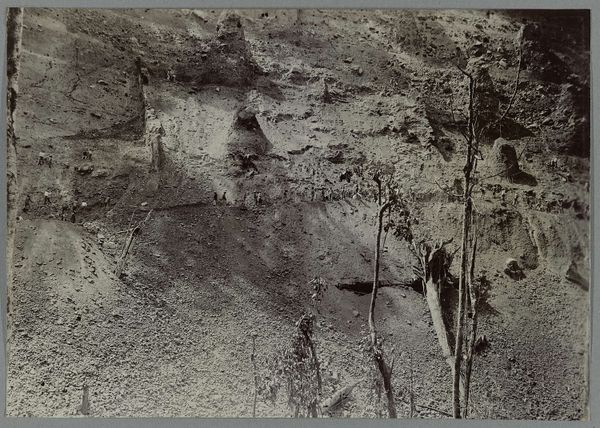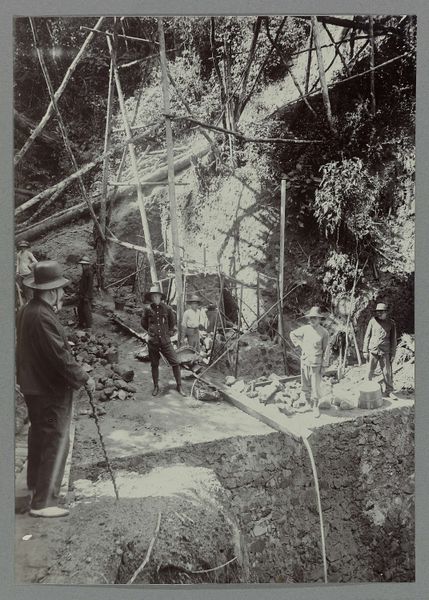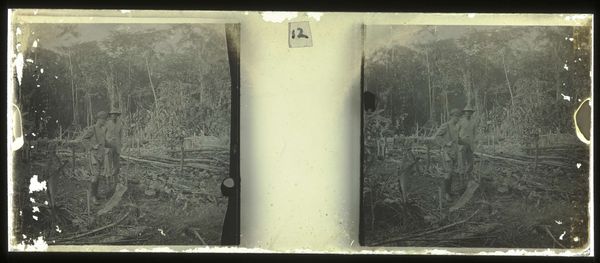
print, photography
# print
#
landscape
#
photography
#
constructionism
Dimensions: height 138 mm, width 200 mm
Copyright: Rijks Museum: Open Domain
Curator: What strikes me immediately about this photograph, entitled "Aanleg van een brug" which translates to "Construction of a Bridge", is how raw and precarious it feels. All that intricate scaffolding rising out of the rough landscape! Editor: The image presents a rather romantic, industrious aesthetic, but seeing all those workers dotted across the unfinished structure... it triggers thoughts about labor, colonialism, and ecological transformation. We believe this photograph was created somewhere between 1903-1913. Curator: It certainly does. Looking at the bridge supports themselves, these monumental concrete blocks rising seemingly effortlessly, hints at power...but in a very material and tangible form. Concrete holds symbolic weight here, standing as a physical, monumental thing. Editor: Precisely. And considering the date, we must address the construction of infrastructures under colonial regimes, with scant regard to human rights or environmental preservation. Bridges certainly connect but they are also tools of expansion, control and exploitation. The human presence appears rather small. Curator: That scale is striking, indeed. There’s a feeling that nature is both a backdrop to this enterprise, and that these monumental forms might return to dust...that all man made constructions might fail and return. In that way, construction can be a potent symbol, tied to fragility and ephemerality. Editor: This interplay really opens avenues of inquiry, inviting critical thinking. If this image presents industry, progress and the crossing of the landscape as triumph, we have to unpack the actual cost. The workers blend into their work, so is it fair to assume a photographic documentation here? Curator: Photography too serves as record, a powerful totem to these transformative changes. I notice how our eye follows this delicate latticework into the shadows where those blocks support nothing...for the present. It serves almost as a memento mori. Editor: A sobering assessment to remind us, in today's climate, that 'progress' extracted under conditions of great environmental destruction may not always equal progress at all. Curator: And those ephemeral materials themselves become historical symbols with the passing of time! Thanks for contextualising and framing all that in a different point of view, it made me see things in a totally new way!
Comments
No comments
Be the first to comment and join the conversation on the ultimate creative platform.
